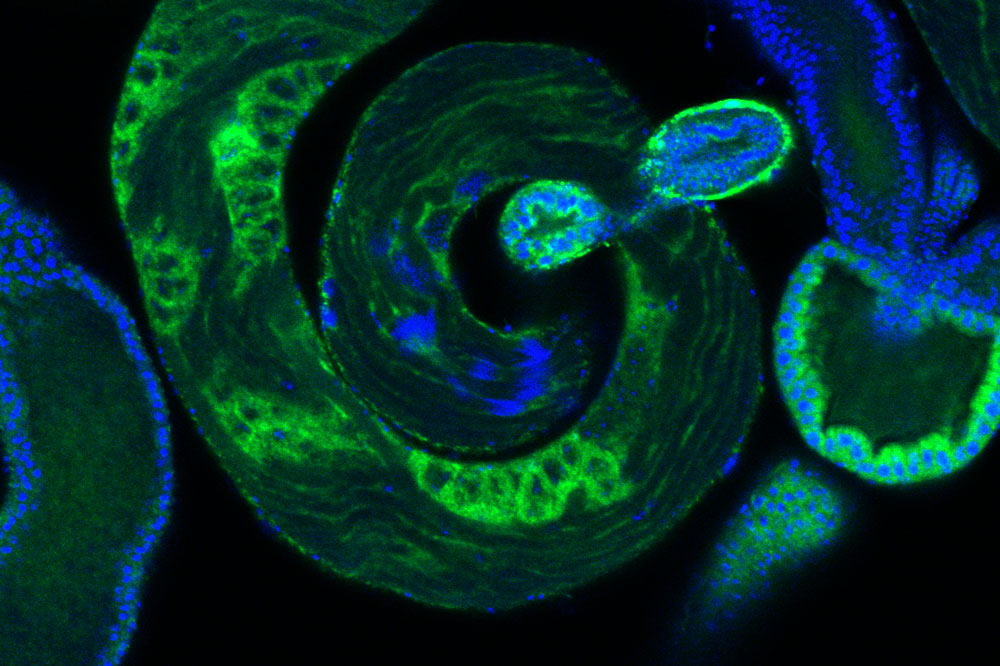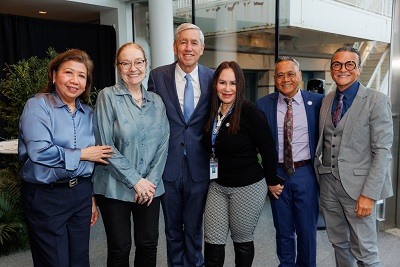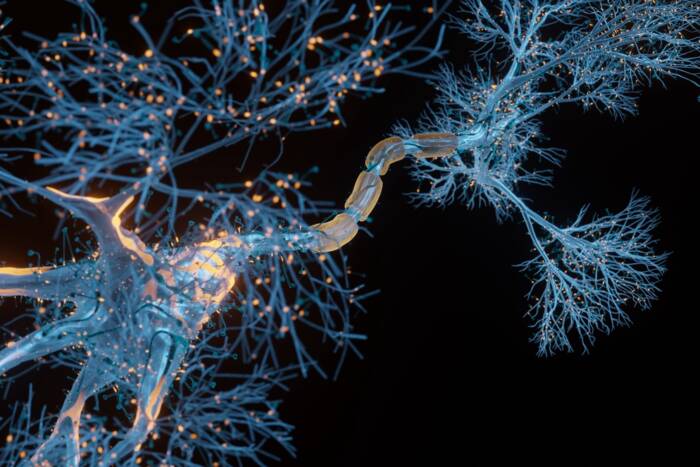Insects on a diet, zombie neurons, and other memorable science stories of 2019

A widely shared Rockefeller story featured the Drosophila testis as a laboratory for novel genes.
As the year comes to an end, it’s a moment to reflect on how much has happened and what the future of bioscience holds. Here’s a look back at some of our most popular science stories of 2019.
The fundamentals
A lot takes place in the course of one year—yet for the brain, even the passing of one second can be epic. How does the brain deal with time? In studying how fruit flies learn from experience, Vanessa Ruta’s lab showed that the relative timing of an incident can determine whether a group of neurons will remember it as good or bad.
Tracking time and space: Human embryos are tiny universes of biological events, most of which happen beyond the reach of scientific inquiry. But tracking these developmental processes as they occur in time and space is now possible thanks to a 3D model of embryos created in the lab of Ali Brivanlou.
In molecular imaging there’s usually a tradeoff between detail and speed. But what if you could have microscopy without compromise? A novel technique, developed in the lab of Alipasha Vaziri, builds a more cohesive picture of the brain by capturing cellular activity across large volumes of neural tissue, with impressive speed and at new depths.
To evolve and prosper, a species needs to continuously add new genes to its inventory. Developing sperm cells are especially good at this type of genetic creativity, which is why researchers in the lab of Li Zhao created a detailed map of mutations arising in fly sperm. It’s a window into how so-called de novo genes—the raw material for future evolution—emerge at breakneck speed.
What’s in the future? For one thing, perhaps a peaceful cohabitation between us and what arguably is the deadliest animal on the planet: the mosquito. By illuminating the blood-feeding behaviors of Aedes aegypti, a species spreading dengue, Zika, chikungunya, and yellow fever, research from the lab of Leslie B. Vosshall promises new ways of changing those behaviors, including the use of a diet drug to keep mosquitoes satisfied—and us safe.
What’s going wrong
2019 was a year of surprises for Rockefeller scientists working to understand disease mechanisms. For example, there was a jaw-dropping moment in the lab of the late Paul Greengard when scientists discovered that in Parkinson’s disease, some brain cells known to perish aren’t actually dead—instead, they’re in a zombie-like state called senescence, capable of causing local inflammation engulfing their healthy neighbors.
Elsewhere on campus, scientists in Hermann Steller’s lab found a new explanation for why brain-damaging protein clumps arise in Parkinson’s as well as in other neurodegenerative conditions. And in the field of another major public-health threat, obesity, Jeffrey M. Friedman and colleagues made unexpected observations concerning the biology of leptin, a signaling hormone that gives the body feedback about how much fat it has in storage. Their research showed that in at least 10 percent of people with obesity, genetic factors prevent the body from producing this internal fat calibrator—suggesting that leptin therapy might be useful for treat the condition in these people.
New year, new innovations
Going forward, we will also be watching the development of other stories that, in 2019, held out the promise of new and better treatments—for cancer, autoimmune conditions, gastrointestinal disorders, and many other health problems. We may even see progress in the fight against drug-resistant bacteria, perhaps in the form of antimicrobial ammunition known as lysins.
Happy reading, Happy Holidays, and stay tuned!


